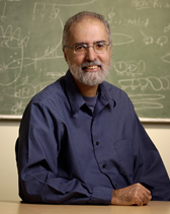Skip to content. | Skip to navigation
Personal tools

- Contact Us |
- Seminars |
- Donate

Lunenfeld-Tanenbaum
Research Institute
Mount Sinai Hospital
Joseph & Wolf Lebovic Health Complex
600 University Avenue
Toronto Ontario
M5G 1X5
Tel.: 416-586-4800 ext.8244
► Web of Science Researcher ID
G-6467-2013
Dr. Joseph Culotti
SENIOR INVESTIGATOR
Dr. Joseph Culotti conducts basic research to understand the development and function of the nervous system. In particular, he looks for genes that regulate and guidance of the growth of neurons. His research has significant implications for the development of new treatments for spinal cord injury. By understanding the mechanisms involved in the development of the spinal cord, we may ultimately be able to re-activate them, enabling severed neurons to reconnect and repair an injured cord.
In order to study the nervous system, Dr. Culotti uses a small roundworm called C. elegans, which he describes as "a simplified spinal cord". Its simplicity makes C. elegans an ideal research model, and Dr. Culotti has discovered startling similarities between the growth of the worm's neurons and those in the human spinal cord. What he learns from the worm therefore has great relevance to our understanding of the development and regeneration of the human nervous system.
Working in collaboration with researchers at Johns Hopkins University, Dr. Culotti has found that similar molecules guide the growing neurons along the same axis in the developing human spinal cord as they do in the humble C. elegans.
Dr. Culotti and his team were the first to identify a neuron guidance cue in these worms — called UNC-6/Netrin — which gives information to growing neurons, in essence telling their axons them in which direction to grow. To work properly, neurons have to develop the right connections to other neurons. UNC-6 acts like a road sign that points some neurons in one direction and others in a different direction. His lab has also identified five new genes that are involved in axon guidance which are being characterized in molecular detail.
At a Glance
Studies the development of the nervous system
Research leads to new insights, treatments for spinal cord injury
Looks for genes involved in directing the growth of neurons -- finds out which genes are active, what signals are being sent, how these signals are received, and how all of this affects the spinal cord
Uses the small roundworm called C. elegans, considered "a simplified spinal cord"
Named the 2005 recipient of the Barbara Turnbull Award for Spinal Cord Research.
Major Research Activities
Dr. Culotti's laboratory is using the simple nematode Caenorhabditis elegans to identify and characterize the function of gene products that are responsible for neurogenesis and for guiding the migration of growing axons. Other projects in the laboratory involve identifying mutations in homologues of genes known to affect axon guidance in vertebrates.



